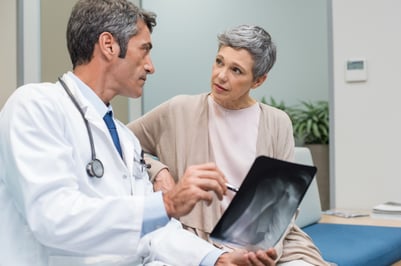eStoreRx™
Online Supplement Dispensary
eStoreRx™ is an easy direct-to-patient ordering & fulfilment program for lifelong wellness.
For over 40 years, Biotics Research Corporation has revolutionized the nutritional supplement industry by utilizing “The Best of Science and Nature”. Combining nature’s principles with scientific ingenuity, our products magnify the nutritional
eStoreRx™ is an easy direct-to-patient ordering & fulfilment program for lifelong wellness.
Biotics Research is proud to expand our commitment to education with the Wellness Unfiltered Pro Podcast. Each episode delves into key health topics and the clinical applications of our premier products. Through candid, insightful conversations, our team offers practical guidance to keep you informed and empowered as a healthcare professional.
December 18 2025
Low-carbohydrate diets are perhaps most popular for weight loss, but the strictest form of carbohydrate restriction – a ketogenic diet – has been show...
 Vitamin K2, a cofactor in the carboxylation of osteocalcin, is recognized as a protector against bone loss and fractures in postmenopausal women. Functionally, the availability of vitamin K regulates the carboxylation of osteocalcin. “Epidemiological studies have found associations between serum undercarboxylated osteocalcin (ucOC) and the risk of hip fracture in elderly women[1] and between low intake of vitamin K1 and risk of hip fracture in older men and women.[2]” In this randomized, placebo-controlled, double-blinded clinical trial, supplementation with Vitamin K2 as MK-7 at a dose of 375ug or placebo for 12 months was evaluated for its benefits on bone mineral density. This was evaluated by “dual X-ray absorptiometry (DXA), bone microarchitecture, measured by high-resolution peripheral quantitative computed tomography (HRpQCT), and [additional] biochemical bone turnover markers, in 148 postmenopausal women with osteopenia.”
Vitamin K2, a cofactor in the carboxylation of osteocalcin, is recognized as a protector against bone loss and fractures in postmenopausal women. Functionally, the availability of vitamin K regulates the carboxylation of osteocalcin. “Epidemiological studies have found associations between serum undercarboxylated osteocalcin (ucOC) and the risk of hip fracture in elderly women[1] and between low intake of vitamin K1 and risk of hip fracture in older men and women.[2]” In this randomized, placebo-controlled, double-blinded clinical trial, supplementation with Vitamin K2 as MK-7 at a dose of 375ug or placebo for 12 months was evaluated for its benefits on bone mineral density. This was evaluated by “dual X-ray absorptiometry (DXA), bone microarchitecture, measured by high-resolution peripheral quantitative computed tomography (HRpQCT), and [additional] biochemical bone turnover markers, in 148 postmenopausal women with osteopenia.”
All patients were also supplemented with calcium (800mg) and vitamin D (38µg). The change in undercarboxylated osteocalcin (ucOC) was determined as the primary endpoint. Following “6 months, the changes were -72.3% (-77.0; -66.6%) in the MK-7 group and -8.0 (-15.3; -0.1%) in the placebo group (P<0.01). Following 12 months the changes were -70.3 (-63.8; -75.6%) in the MK-7 group and -7.2 (-15.9; 2.0%) in the placebo group (P<0.01).”
Changes in total osteocalcin also differed between the two groups. “Following 12 months the changes were -18.8 ± 13.9% in the MK-7 group and -2.5 ± 12.8% in the placebo group (P < 0.01).”
Thus, it was concluded that “treatment with MK-7, 365ug daily, in addition to calcium and vitamin D, for 12 months reduced serum levels of undercarboxylated osteocalcin by more than 70%, reduced the ratio ucOC/OC by more than 60%, increased bone-specific alkaline phosphatase (BAP) by 5%, and maintained microarchitecture in trabecular bone in tibia, despite no significant effects on BMD.”
Ref.: Ronn SH, Harslof T, Pedersen SB, Langdahl BL. Vitamin K2 (menaquinone-7) prevents age-related deterioration of trabecular bone microarchitecture at the tibia in postmenopausal women. European Journal of Endocrinology. (2016) 175(6):541–549.
[1] Szulc P, Chapuy MC, Meunier PJ & Delmas PD. Serum undercarboxylated osteocalcin is a marker of the risk of hip fracture in elderly women. J Clinical Investigation. 1993 91 1769–1774. (doi:10.1172/JCI116387)
[2] Booth SL, Tucker KL, Chen H, Hannan MT, Gagnon DR, Cupples LA, Wilson PW, Ordovas J, Schaefer EJ, Dawson-Hughes B et al. Dietary vitamin K intakes are associated with hip fracture but not with bone mineral density in elderly men and women. Am J Clin Nutr. 2000 71 1201–1208.
Submit this form and you'll receive our latest news and updates.
*These statements have not been evaluated by the Food and Drug Administration. This product has not intended to diagnose, treat, cure, or prevent any disease.
Proposition 65 Warning
© 2025 Biotics Research Corporation - All Rights Reserved
Submit your comment